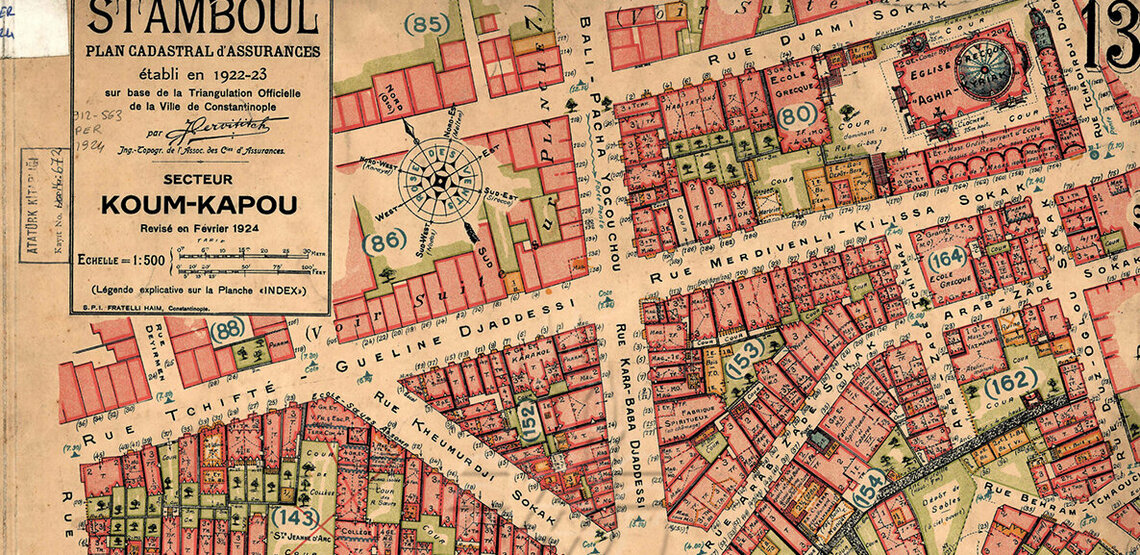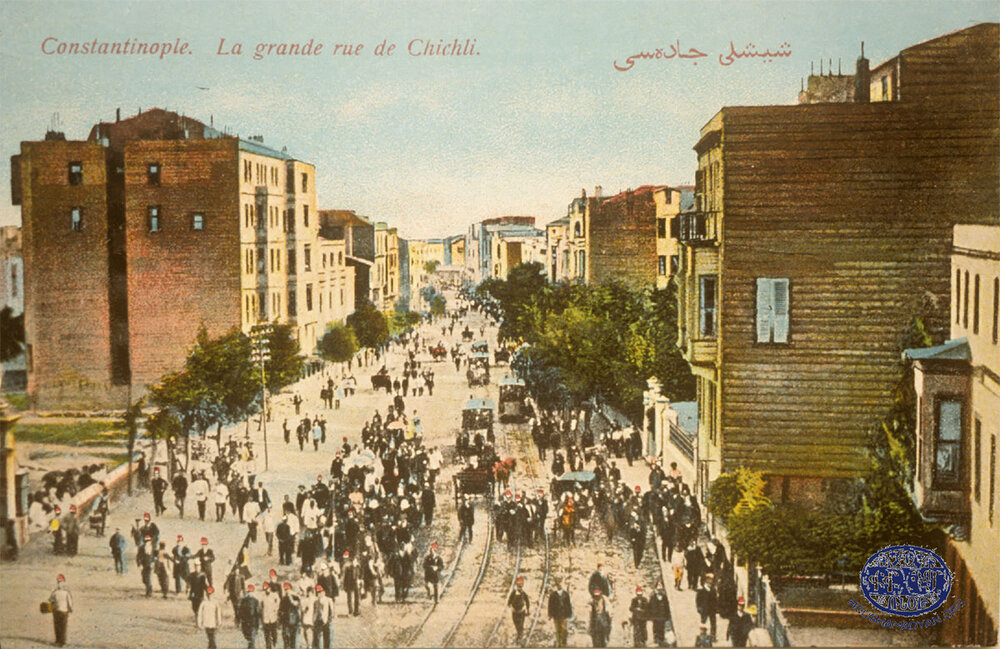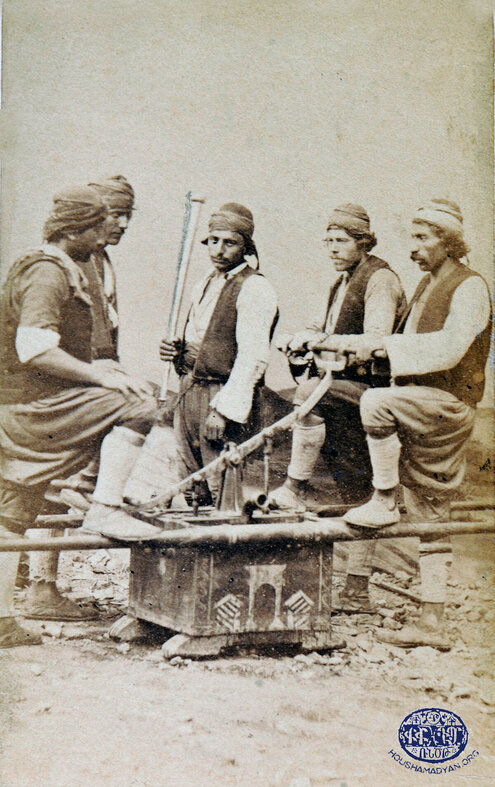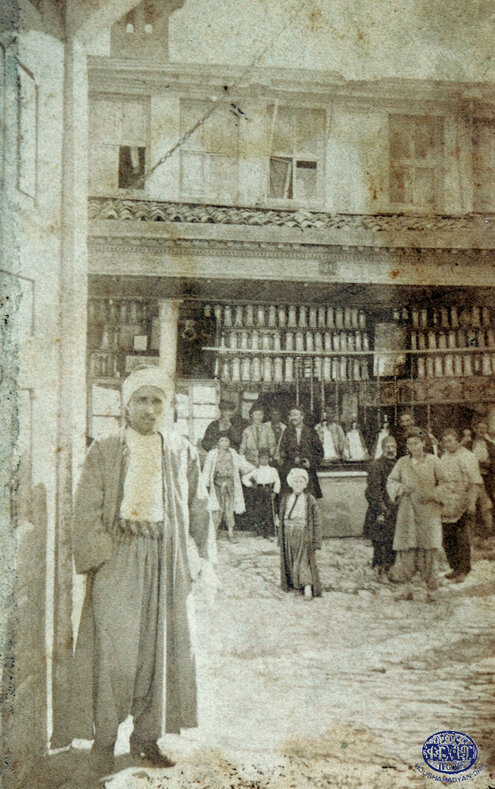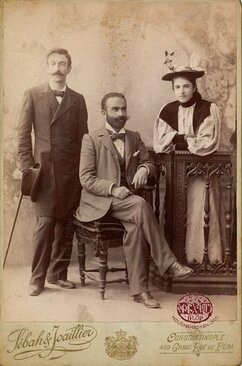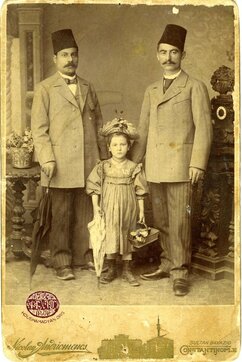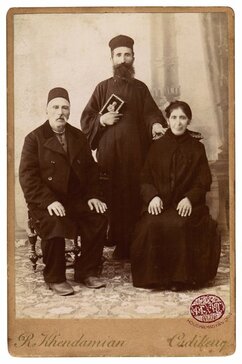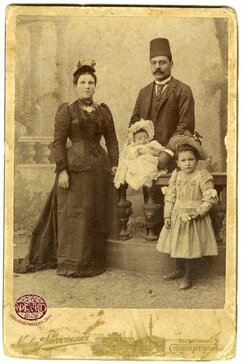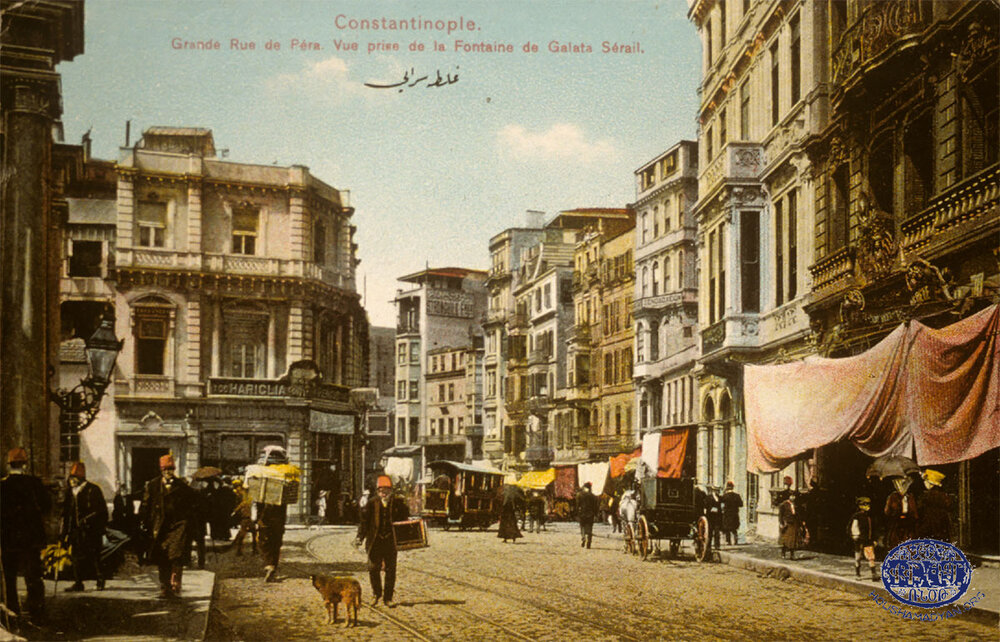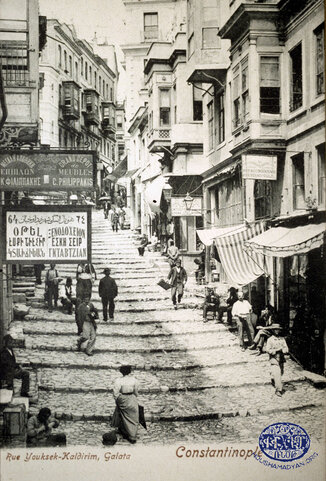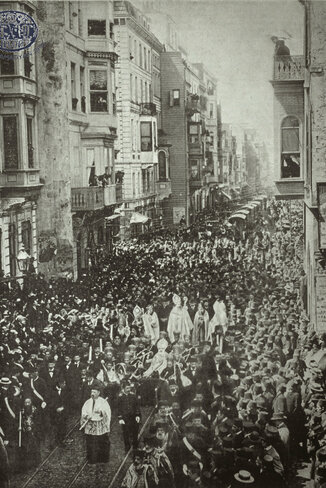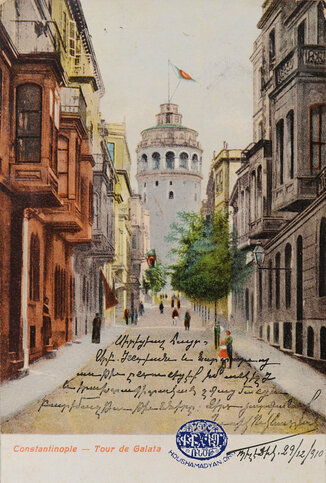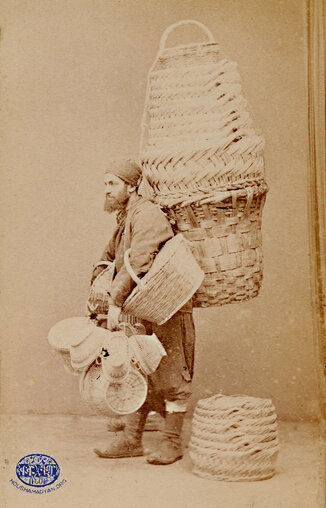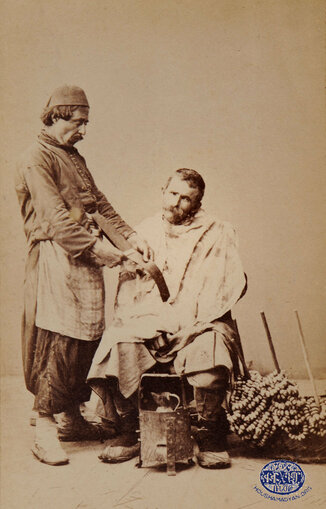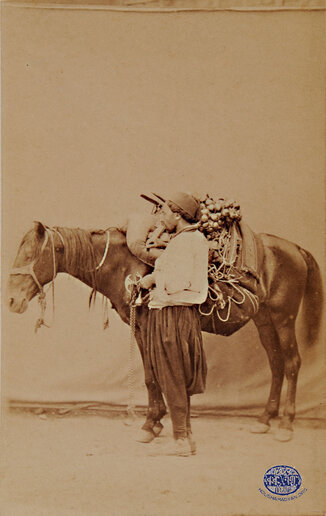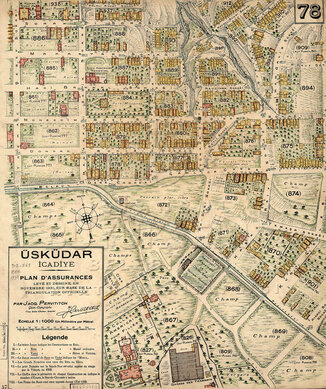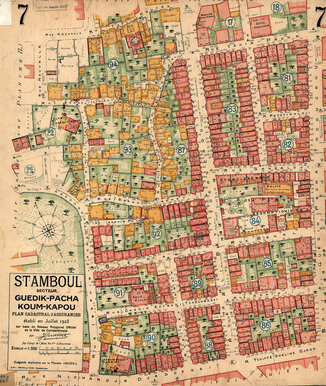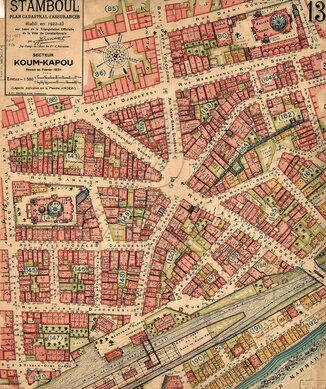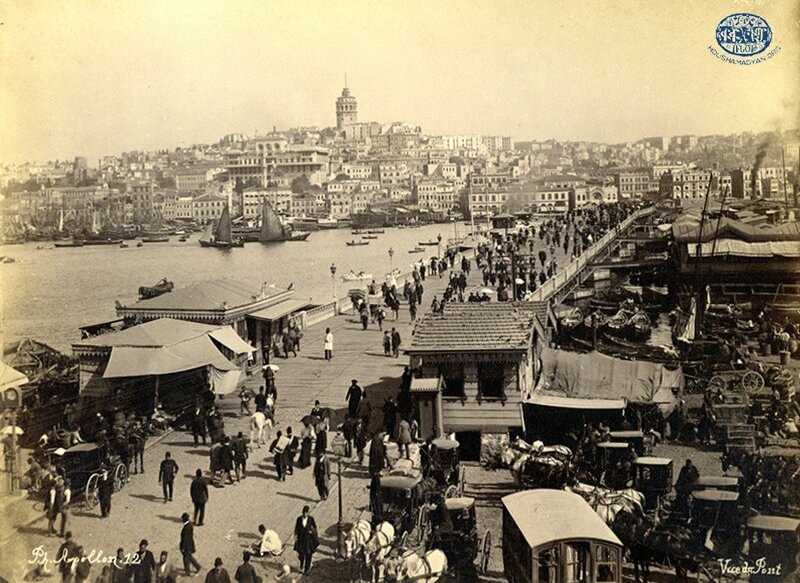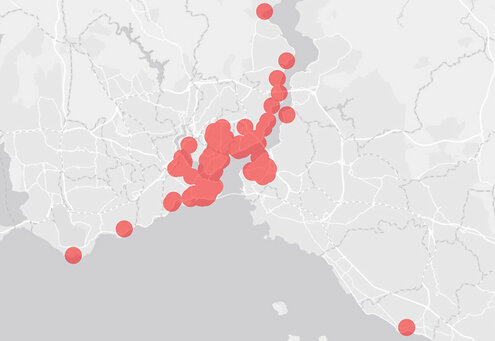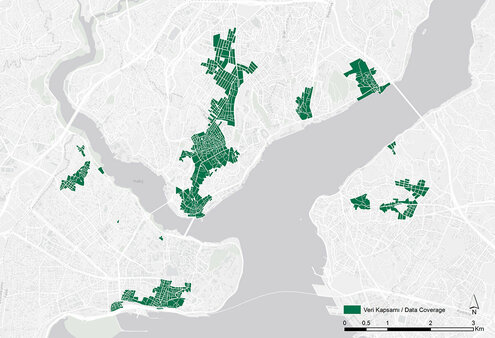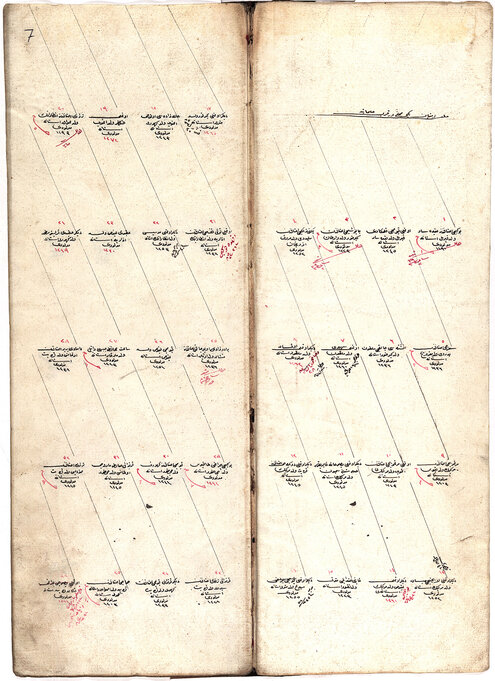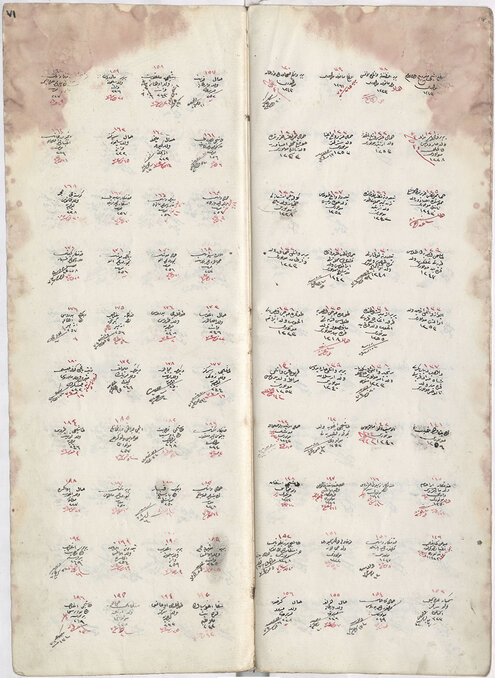Istanbul - Demography
Author: Daniel Ohanian et al., 06/05/19 (Last modified 06/05/19)
Ottoman Istanbul and Its Armenian Inhabitants: Population Data and Maps, 1830s–c. 1907

The files below were donated by Daniel Ohanian, co-principal investigator of a research project called Recovering Armenians in Late Ottoman Istanbul and Making Ottoman-Era Population Data Available for All. This research project ran from 2015 through 2018. It was funded by the Calouste Gulbenkian Foundation and hosted by Istanbul Bilgi University. M. Erdem Kabadayi and Daniel Ohanian were the principal investigators.
If you have any questions about this material or if you have corrections to submit, please write to Daniel Ohanian at dohanian@ucla.edu.
The following files are available for download.
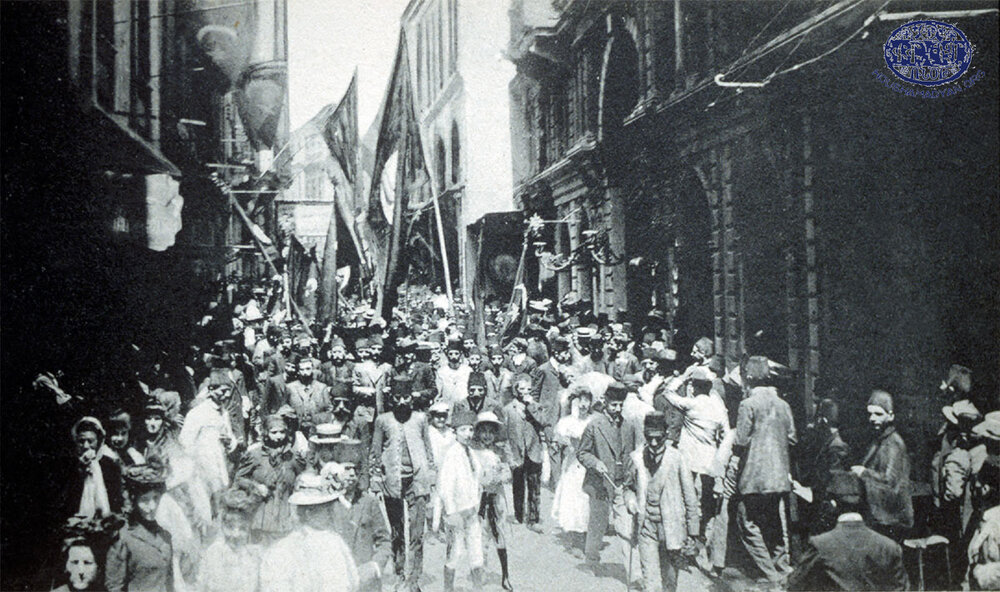

1. Permanent Residents, 1830s–1880s
This dataset covers 12,824 Armenian males who were permanent residents (referred to as müteehhil and evli) of the city of Istanbul. The population registers it is based on were compiled in Ottoman Turkish and updated from the 1830s through the 1880s. They are available at the Ottoman Archives of the Office of the Prime Ministry of the Republic of Turkey (population registers 511–517, NFS.d.00511–NFS.d.00517). The dataset is a nearly complete transcription; only abbreviations that we could not decipher were left out.
This dataset is available in English, Turkish, and Armenian.
Citation: Daniel Ohanian et al., Transcription of Ottoman Population Registers 511–517 Covering Male Armenian Permanent Residents of the City of Istanbul [data collection], last updated 4 November 2018, www.houshamadyan.org

2. Migrants, 1830s–1880s
This dataset covers 9,697 Armenian male migrants (referred to as bekarlar) living in the city of Istanbul. The population registers it is based on were compiled in Ottoman Turkish and updated from the 1830s through the 1880s. They are available at the Ottoman Archives of the Office of the Prime Ministry of the Republic of Turkey (population registers 511 and 513–516, NFS.d.00511 and NFS.d.00513–NFS.d.00516). The dataset is a nearly complete transcription; only abbreviations that we could not decipher were left out.
This dataset is available in English, Turkish, and Armenian.
Citation: Daniel Ohanian et al., Transcription of Ottoman Population Registers 511 and 513–517 Covering Male Armenian Migrants in the City of Istanbul [data collection], last updated 4 November 2018, www.houshamadyan.org

3. Occupations, 1830s–1880s
This file is a key that categorizes the occupations in the 1830s–1880s population registers according to the Primary, Secondary, Tertiary System designed by E. A. Wrigley and Ros Davies at the University of Cambridge. This key allows users to group similar occupations together and facilitates international comparison.
Citation: Daniel Ohanian et al., Primary, Secondary, Tertiary System Key for Occupations in Ottoman Istanbul, 1830s–1880s [data collection], last updated 13 April 2019, www.houshamadyan.org

4. HGIS of Permanent Residents, 1830s–1880s
This is an historical geographic information system (HGIS) that lays the abovementioned population data on top of a current map of Istanbul. Special software, which is only available for Windows operating systems, is required to open it. The simplified version can be accessed by opening the PMF file with the free program ArcReader 10.6. The complete version can be accessed by opening the MXD file with the paid program ArcMap 10.6.
Citation: Daniel Ohanian et al., Male Armenian Permanent Residents of the City of Istanbul HGIS, 1830s–1880s [data collection], last updated 12 November 2018, www.houshamadyan.org
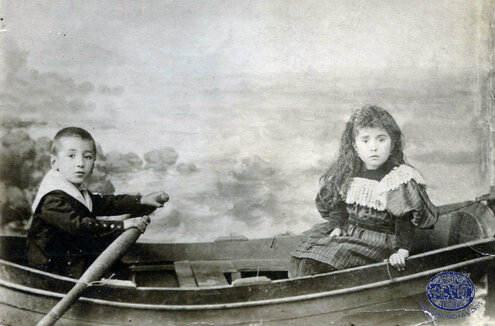
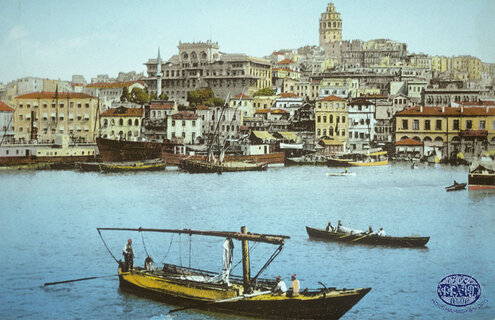

5. HGIS of Migrants, 1830s–1880s
This is an historical geographic information system (HGIS) that lays the abovementioned population data on top of a current map of Istanbul. Special software, which is only available for Windows operating systems, is required to open it. The simplified version can be accessed by opening the PMF file with the free program ArcReader 10.6. The complete version can be accessed by opening the MXD file with the paid program ArcMap 10.6.
Citation: Daniel Ohanian et al., Male Armenian Migrants in the City of Istanbul HGIS, 1830s–1880s [data collection], last updated 12 November 2018, www.houshamadyan.org
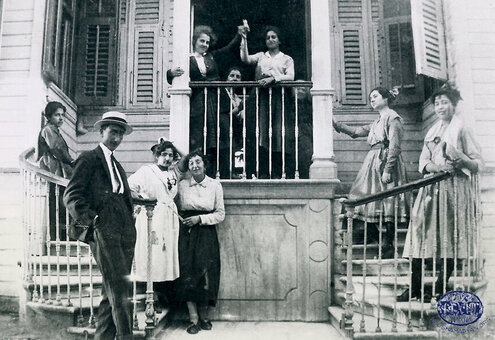
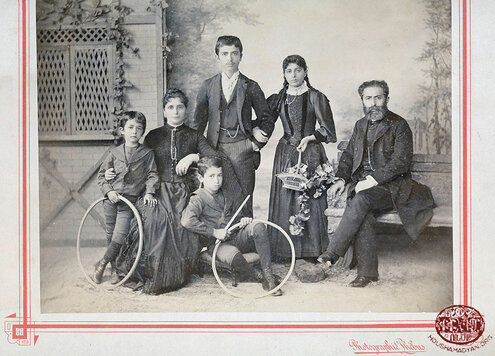

6. Permanent Residents, c. 1907
This dataset covers 23,885 Apostolic Armenian males and females who were permanent residents (referred to as yerliler and տեղացիներ) of the province of Istanbul. The population register it is based on was compiled around the year 1907 as part of an empire-wide census. It was written in Armenian and Armeno-Turkish (i.e., Ottoman Turkish written with Armenian letters). The location of the original register is unclear, but a microfilmed copy is available at the Krikor and Clara Zohrab Information Center in New York City (microfilm collection items 1213461, 1213462, and 1213463). Our project transcribed 60% of it. The full register contains information about 40,000 individuals.
For research that uses and discusses this data, see Daniel Ohanian, “Collaboration in Ottoman Governance: The c. 1907 Imperial Census and the Armenian Apostolic Patriarchate of Istanbul,” Journal of the Ottoman and Turkish Studies Association 4, no. 2 (2017): 365–380; and Daniel Ohanian, “The 1902 (AH 1320, AR 1318) Ottoman Census Regulations,” Academia.edu, www.academia.edu/34414609/. For a discussion of the provenance of this source and the process by which it was transcribed, see Daniel Ohanian, Z. Mehmet Başkurt, and M. Erdem Kabadayı, “An Historical Geographic Information System for Ottoman Studies: The c. 1907 Ottoman Census and Armenian Settlement in Istanbul,” Turcica. Revue d’études turques—peuples, langues, cultures, États 51 (2020): 255–283.
This dataset is available in its original languages (Armenian with Armeno-Turkish), English, Turkish, and Armenian.
Citation:Sayat Tekir and Daniel Ohanian, Partial Transcription of the c. 1907 Population Register of the Armenian Apostolic Patriarchate of Constantinople [data collection], last updated 1 November 2018, www.houshamadyan.org

7. Occupations, c. 1907
This file is a key that categorizes the occupations in the c. 1907 population register according to the Primary, Secondary, Tertiary System designed by E. A. Wrigley and Ros Davies at the University of Cambridge. This key allows users to group similar occupations together and facilitates international comparison.
Citation: Daniel Ohanian et al., Primary, Secondary, Tertiary System Key for Occupations in Ottoman Istanbul, c. 1907 [data collection], last updated 14 April 2019, www.houshamadyan.org

8. HGIS of Permanent Residents, c. 1907
This is an historical geographic information system (HGIS) that lays the abovementioned population data on top of a current map of Istanbul. Special software, which is only available for Windows operating systems, is required to open it. The simplified version can be accessed by opening the PMF file with the free program ArcReader 10.6. The complete version can be accessed by opening the MXD file with the paid program ArcMap 10.6.
For an explanation of how this resource was created, see Daniel Ohanian, Z. Mehmet Başkurt, and M. Erdem Kabadayı, “An Historical Geographic Information System for Ottoman Studies: The c. 1907 Ottoman Census and Armenian Settlement in Istanbul,” Turcica. Revue d’études turques—peuples, langues, cultures, États 51 (2020): 255–283.
Citation: Daniel Ohanian et al., Apostolic Armenian Permanent Residents of the Province of Istanbul HGIS, c. 1907 [data collection], last updated 12 November 2018, www.houshamadyan.org
Map 1: A fire-insurance map of İcadiye produced in 1930. Jacques Pervititch, İstanbul: Üsküdar 78; İcadiye, plan d’assurances (Istanbul: Türkiye Sigortacılar Daire-i Merkeziyyesi, 1930), İBB Atatürk Kitaplığı Sayısal Arşiv ve e-Kaynaklar, ataturkkitapligi.ibb.gov.tr/kutuphane3/haritalar/Hrt_000552.pdf.
Map 2: A fire-insurance map of Gedikpaşa and Kumkapı produced in 1923. Jacques Pervititch, Stamboul secteur 7: Guedik Pacha, Koum-Kapou, plan cadastral d’assurances (Istanbul: Türkiye Sigortacılar Daire-i Merkeziyyesi, 1923), İBB Atatürk Kitaplığı Sayısal Arşiv ve e-Kaynaklar, ataturkkitapligi.ibb.gov.tr/kutuphane3/haritalar/Hrt_000665.pdf.
Map 3: A fire-insurance map of Kumkapı produced in 1922–1924. Jacques Pervititch, Stamboul 13: Koum-Kapou, plan cadastral d’assurances (Constantinople: Türkiye Sigortacılar Daire-i Merkeziyyesi, 1924), İBB Atatürk Kitaplığı Sayısal Arşiv ve e-Kaynaklar, ataturkkitapligi.ibb.gov.tr/kutuphane3/haritalar/Hrt_000672.pdf.

Captions and sources of the pictures
1) The Pera (Beyoglu/Beyoğlu) neighborhood, July 19, 1908. The street of the Armenian Holy Trinity Church (Source: Raymond H. Kévorkian/Paul B. Paboudjian, Les Arméniens dans l'Empire Ottoman à la veille du Génocide [The Armenians in the Ottoman Empire on the Eve of the Genocide], Paris, 1992).
2) Istanbul, Shishli neighborhood (Source: Raymond H. Kévorkian/Paul B. Paboudjian, Les Arméniens dans l'Empire Ottoman à la veille du Génocide, Paris, 1992).
3) Istanbul, a group of firefighters. Photographer: Abdullah Brothers (Source: Mekhitarist Order, San Lazzaro, Venice).
4) Istanbul, one of the entrances into the big bazaar of Charshekapi/Çarşıkapı (Kapalecharshe/Kapalı Çarşı). Sellers of medicinal herbs (keokdjis/kökçü) (Source: Mekhitarist Order, San Lazzaro, Venice).
5) The Shmavonian family, Istanbul. Photographer: Sébah & Joaillier (Source: Jamgochian Collection, United States).
6) Istanbul. Left to right – Aharon Arslan (born and deceased in Kharpert/Harput), and his daughter Maritsa in the center (1893 (Istanbul or Kharpert)-1962 (Istanbul)). The identity of the person on the right is unknown. The Armenian letters M and D, sewn into Maritsa’s clothing, probably stand for MangaBardez (kindergarten) (Source: Bossière/Mantarian Collection, Nantes, France).
7) Istanbul, Kadekugh/Kadıköy, 1897. In the center of the photograph is Father Vramshabouh Kibarian. Seated, on the left, is Hagop (the priest’s father), and on the right is the priest’s mother-in-law (mother of Takouhi) (Source: Kibarian Collection, Paris).
8) Istanbul. The Arslan family. On the very left is Nazli Arslan (nee Barsoum, 1863 (Kharpert)-1952 or 1955 (Kharpert)). Next to Nazli is her husband, Aharon Arslan, carrying Naoum (1896 (Istanbul)-1955 (Kharpert)). The little girl is Maritsa (1893-1962) (Source: Bossière/Mantarian Collection, Nantes, France).
9) Istanbul. Members of the Indjidjian family (source: Indjidjian Family Collection, Paris).
10) The Galata neighborhood, viewed from the Golden Horn/Haliç (Source: Raymond H. Kévorkian/Paul B. Paboudjian, Les Arméniens dans l'Empire Ottoman à la veille du Génocide, Paris, 1992).
11) Istanbul, a view from the Pera District (Source: Raymond H. Kévorkian/Paul B. Paboudjian, Les Arméniens dans l'Empire Ottoman à la veille du Génocide, Paris, 1992).
12) The Israelian family, Kinali Island/Kınalıada, Istanbul, 1900s (Source: Gayda Collection, Brussels).
13) Istanbul. The Gosdantian family. Photographer: Phébus (Source: Jamgochian Collection, United States).
14) Yuksek Kaldirim/Yüksek Kaldırım Street, leading from Galata up to Pera (Source: Raymond H. Kévorkian/Paul B. Paboudjian, Les Arméniens dans l'Empire Ottoman à la veille du Génocide, Paris, 1992).
15) The funeral procession of the Patriarch of the Armenian Catholic Church, Bedros Azarian, 1899 (Source: Raymond H. Kévorkian/Paul B. Paboudjian, Les Arméniens dans l'Empire Ottoman à la veille du Génocide, Paris, 1992).
16) The Galata tower (Source: Mekhitarist Order, San Lazzaro, Venice).
17) Istanbul. A street vendor selling baskets (sepetdji). Photographer: Abdullah Brothers (source: Mekhitarist Order, San Lazzaro, Venice).
18) Istanbul, a street barber. Photographer: Abdullah Brothers (Source: Mekhitarist Order, San Lazzaro, Venice).
19) An onion seller. Photographer: Abdullah Brothers (source: Mekhitarist Order, San Lazzaro, Venice).
